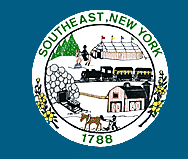This is a privately owned informational website that is not owned or operated by any state government agency.
If you have any questions about this domain name or website, please contact us here.
Visit The Official Town of Southeast Website
About Town of Southeast, NY, Brewster Police Department
The Town of Southeast is located in Putnam County, New York. It's situated in the lower Hudson Valley region, bordered by the towns of Carmel to the north, Patterson to the east, and to the west by the towns of Kent and Putnam Valley. To the south, it shares a border with Fairfield County, Connecticut. The town covers a total area of approximately 35 square miles.
History
Southeast has a rich history, dating back to its establishment in 1788. Originally, it was part of the Frederickstown Precinct which included the present-day towns of Carmel, Kent, and Patterson. The town played a significant role in the Revolutionary War, with several skirmishes and events occurring in the area.
As of the latest U.S. Census data, the population of Southeast consists of a diverse community. The demographic composition includes various ethnic groups, ages, and economic backgrounds. The town has seen gradual growth in population over the years, reflecting the general trends in suburban development in the Hudson Valley region.
Economy
The economy of Southeast is a blend of various sectors, including retail, services, and light manufacturing. The town benefits from its proximity to New York City and other major urban centers, making it attractive for businesses and residents seeking a balance between urban and rural living.
Education
The Town of Southeast is served by the Brewster Central School District. The district comprises several elementary schools, a middle school, and Brewster High School. The educational institutions in Southeast are known for their strong academic programs and community involvement.
Infrastructure
Southeast enjoys a well-developed transportation infrastructure, with major highways such as Interstate 84 and State Route 22 passing through. The town is also served by the Metro-North Railroad's Harlem Line, providing convenient access to New York City.
The town ensures essential utilities like water, electricity, and gas are readily available. There are also advanced telecommunications services, including high-speed internet, catering to both residents and businesses.
Recreation and Culture
Southeast offers a variety of recreational and cultural activities. The town boasts numerous parks, hiking trails, and natural preserves. The cultural scene includes local theaters, art galleries, and historical sites, reflecting the town's commitment to preserving its heritage and fostering community engagement.
Government and Public Services
The town government of Southeast operates under a town board format, ensuring local governance and community representation. Public services such as police, fire, and emergency medical services are robust, with a focus on maintaining the safety and well-being of its residents.
Notable Places
- Tilly Foster Farm: A historic farm offering educational programs and events.
- Southeast Museum: Dedicated to preserving the history of the Southeast region.
Southeast is actively involved in environmental conservation efforts. The town has implemented several initiatives to preserve its natural landscapes and promote sustainability.
Brewster Police Department, NY
The Brewster Police Department (BPD) is a key law enforcement agency serving the Town of Southeast, New York. As the primary police force in the area, BPD is responsible for maintaining public safety, enforcing laws, and providing essential community services. The department is known for its commitment to professionalism, community engagement, and maintaining a safe environment for the residents and visitors of Southeast.
Structure and Leadership
BPD operates under a structured hierarchy, typical of law enforcement agencies. At the top is the Chief of Police, who oversees the entire department's operations. The Chief is supported by a team of officers, detectives, and administrative staff. Each division within the department specializes in different aspects of law enforcement, ranging from patrol services to investigative work.
Services and Responsibilities
Patrol Division
The Patrol Division is the most visible part of the BPD. Officers in this division are responsible for regular patrols, traffic enforcement, responding to emergency calls, and ensuring public safety throughout the town.
Investigative Services
The Investigative Division handles more complex criminal cases. This includes conducting in-depth investigations, gathering evidence, and working closely with other law enforcement agencies when necessary.
Community Engagement
Brewster Police Department places a strong emphasis on community engagement. Officers regularly participate in community events, educational programs, and outreach initiatives to foster a positive relationship between the police and the community.
Special Programs and Units
BPD may also have specialized units and programs addressing specific community needs, such as drug enforcement, domestic violence, and youth programs. These units work in collaboration with local organizations and other governmental agencies to provide comprehensive services.
Training and Standards
Officers in the Brewster Police Department undergo rigorous training, adhering to state and national standards. This training ensures they are well-equipped to handle various challenges and situations they might encounter in the line of duty.
Contact Information
For general inquiries and non-emergency contact, individuals can reach out to the Brewster Police Department through the following means:
In case of emergencies, individuals should dial 911 for immediate assistance.
|










